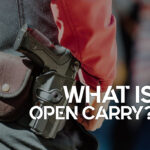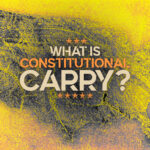
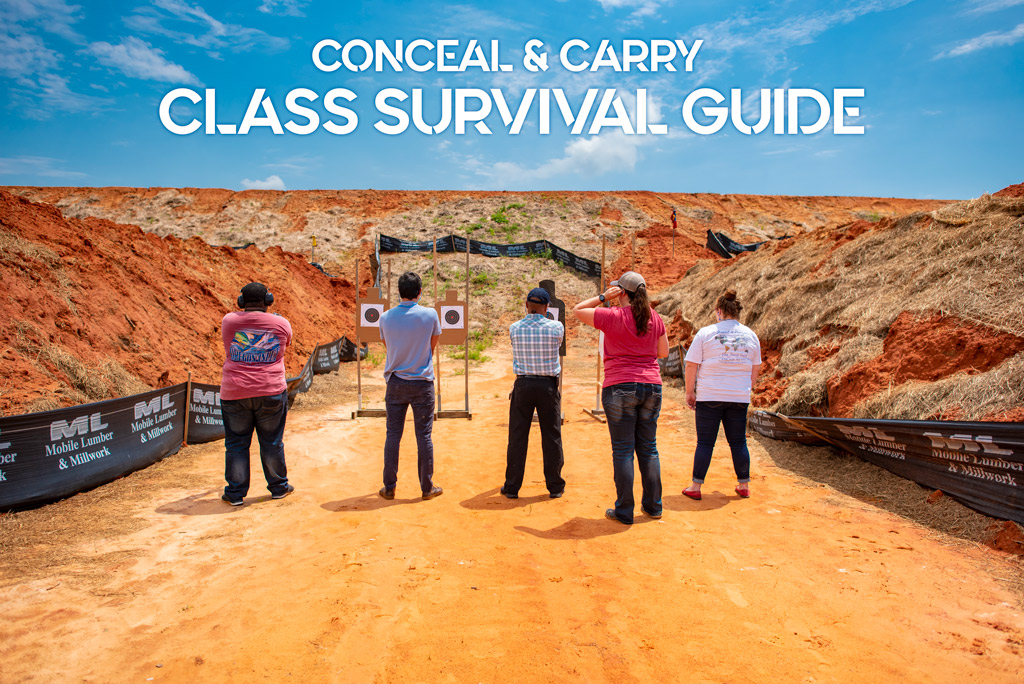
Guest Writer: Kenzie Fitzpatrick
Signing up and preparing for a conceal and carry class is an exciting time, but it can also be a bit confusing. What is taught in a concealed carry class? I remember a time when I knew next to nothing about it and I wasn’t sure what to expect. Luckily, you’ve landed here to find out how to sign up for a class, what to bring, what to expect, and the next steps following your class. Remember that you’re most likely not the only one looking for information and the instructor should be more than willing to answer any questions you may have!
Conceal and carry classes include basic instruction on pistols, but I strongly recommend you take a beginner pistol class first. First-time shooters in a beginner pistol class will learn state laws, basic firearm safety rules, proper shooting stances, parts of a pistol, how to clean a pistol, and more. These are things that you learn in a basic class.
Instructors and ranges may have different options to sign up for a class. Most conceal and carry classes will require pre-registration so they can order class materials, get a seat count, and let the range know how many people will be shooting. If you find a class that doesn’t require pre-registration, I would refer back to our Concealed Carry Class Questions guide so you don’t end up attending a class with 40:1 student to instructor ratio.
Questions Your Instructor Should Ask:
There are several questions that an instructor should be asking of you before you show up.
- The minimum information an instructor should ask for is your full legal name, email address, phone number, and home address. The state will require your full legal name in order to send you the certificate needed to get a permit. An instructor has to put their credentials on the certificate and each student is tied to that instructor if anything should happen.
- The student’s address is important as your class and certificate is state-specific to meet the statutes required. While students may not know this, instructors should. I have had someone inquire about taking my class, but I informed them while it would be a great class for them to learn from, it cannot fill other state statute requirements.
- An instructor should ask what kind of shooting experience you have. This helps identify where to start with each student and how to teach to their level.
- An optional question may include if you are current or former law enforcement, military, and/or private security.
- Lastly, your instructor may have you answer a question pertaining to your “felon status”. If you have ever been convicted of a felony, you cannot obtain a permit or a firearm so you would be unable to take the course.
Before every class I have, I close registration a week in advance and send all my students a thorough email of how to prepare for class. In these bullet points below, I’ll go over some of the common items to bring, in what state to bring them in, and when/where they are allowed.
What To Bring to a Conceal and Carry Class
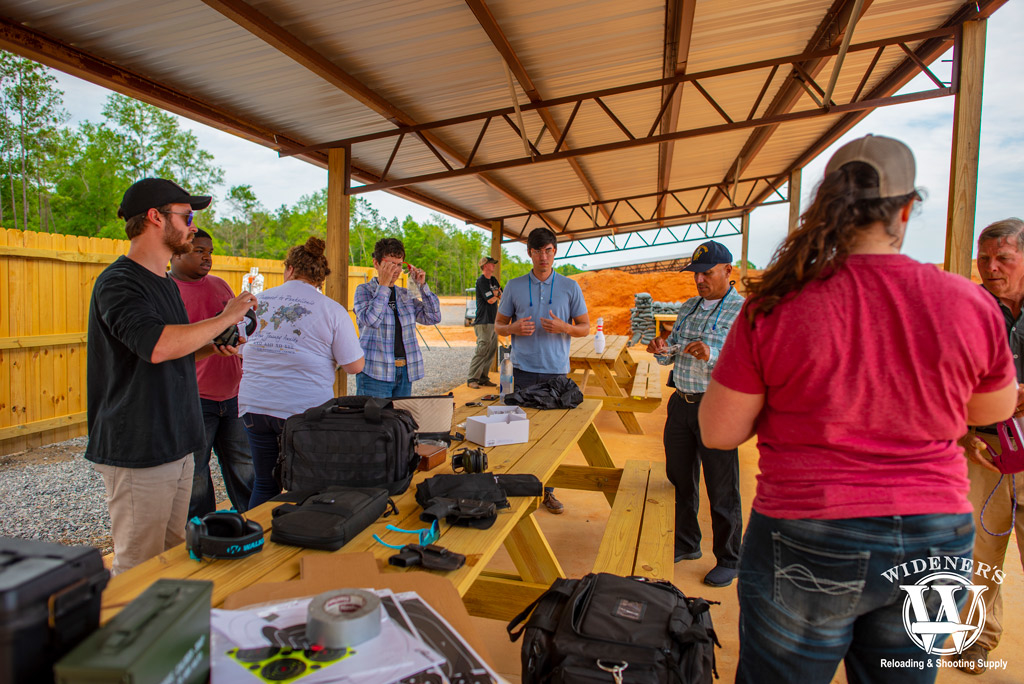
You’ll need to bring the essentials for your conceal and carry class, make a checklist and check it twice before attending the class.
- Eye and Ear Protection
If you plan on carrying concealed, I will assume you will be going to a range to practice with your firearm. Instead of buying cheap foam inserts, invest in good hearing protection which could mean electronic ear muffs or custom-fitted earplugs. Not all eye protection is made the same. Your sunglasses are most likely not ballistic rated which means they won’t protect you from small projectiles and fragments. When purchasing eye protection, be sure you buy eyewear that wraps along the side of your eye as well.
- Proper Clothing
Proper shooting clothing includes closed-toe shoes, pants with a belt to facilitate holster wear, and a shirt with sleeves and closure around the neck. I would highly recommend wearing clothing that you plan to wear regularly and carry concealed in. This class will give you the opportunity to get a feel for what real life will be like. Ask the instructor if you’ll be at an indoor or outdoor range for the shooting portion.
- Ammunition
Do not bring live ammunition into the classroom. In all NRA classes, this is not allowed, but it is also good practice for other classes to adhere to. The reason for this is that it’s easy to mix up dummy rounds and live rounds. It’s best to leave this in the car and only bring it to the range portion of the class.
Do I Need To Bring A Gun To Concealed Carry Class?
- Handgun
When it comes to bringing handguns to class, always ask the instructor ahead of time if you’re allowed to bring your own pistol. Ask him or her if you are allowed to bring it in the classroom and/or to the range. You should always keep your handgun unloaded, have the slide locked back or cylinder empty, and be secured in a case in the classroom.
Most instructors will ask to check your handgun at the door to the classroom. The instructor will inspect that the gun is unloaded. If you have magazines, unload them and keep them from the handgun. Magazines are important in classroom instruction to show you how to load and unload a magazine.
- Holsters
If you don’t have a holster for your concealed carry pistol yet, do not go out and buy one just for the class. You’ll be taught in concealed carry class the ways you can safely conceal carry. Instructors may also provide examples of holster types. Take advantage of looking at, feeling, and even wearing the holsters. I recommend trying as many as you can before making a purchase.
- Water, Sunscreen, Lunch/Snacks
Conceal and carry classes can get long. When they’re taught year-round, you might find yourself in extreme weather conditions (hot/cold). Be sure to pack yourself snacks, possibly lunch, lots of water, and sunscreen (if you’re at an outdoor range).
What To Expect at Conceal and Carry Class
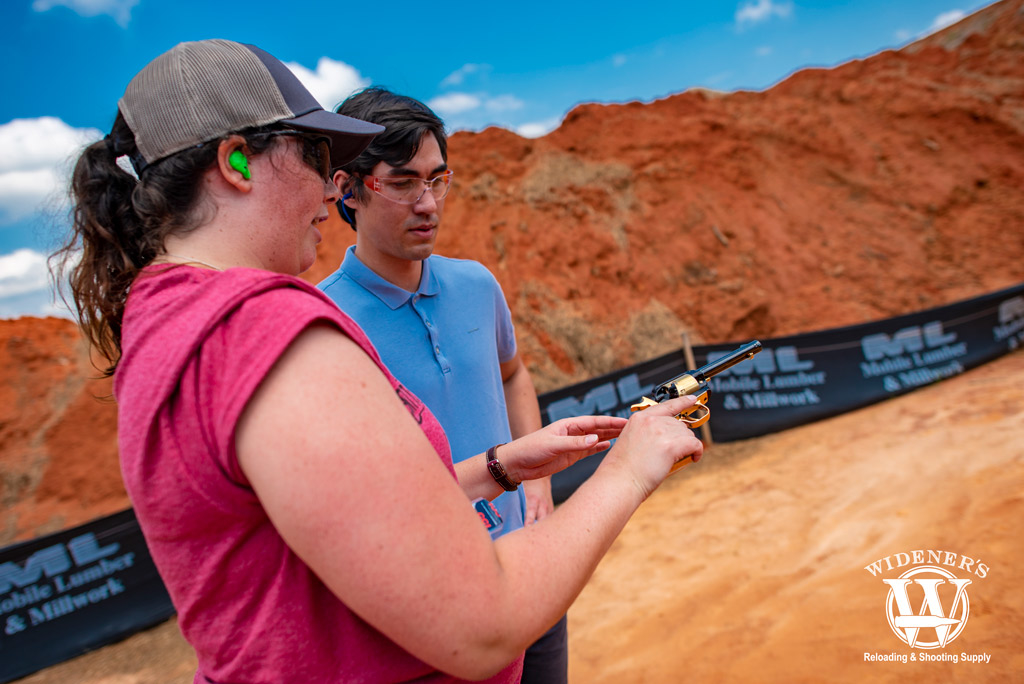
The length of the class may vary depending on your state, be sure to plan ahead and schedule enough time to attend.
- Length of Class
Depending on what state you live in, statutes may govern how long your class has to be. In states where there isn’t a set mandate, plan to be in class the whole day. The number of students in the classroom portion doesn’t significantly change the amount of time it takes to teach, but the instructor to student ratio at the range does.
- Course Materials
In private courses, there may not be any formal course materials. If you take any class by the NRA, there will be a class booklet about your chosen discipline (Basics of Pistol, Rifle, Shotgun, etc.). Course materials may include dummy ammunition rounds, holsters, training pistols, and more items that facilitate hands-on learning.
- Written Test
Private courses may or may not have a written test. Some instructors may choose to do one so they can keep it for their own records. Your state may also mandate written tests before you can apply for a permit. You can always ask your instructor if it’s pass or fail or a certain percentage correct. NRA classes do require a written test, but they are open-book exams. It never hurts to quiz yourself on lessons taught in the classroom and go through some of the more difficult questions as a group.
What Questions Should I Ask?
- Ask Questions
Ask as many questions as needed when you are being taught at a concealed carry class. It’s never too late to ask a question, even after the test. A new concept is not easy to digest and a one-day course on firearms. A conceal and carry class is a lot of information to absorb. Your instructor should be a lifelong resource to you to ask questions about concealed carry, talk about concealed carry options, find out about local and national resources, and how to find further education.
- Legal Information
The legal section will be specific to your state’s statutes. In these classes, they may go over the larger points about where you can carry, what states reciprocate your state’s license, what buildings prohibit firearms, but it will not be a complete overview of every legal detail you may need to know. I highly recommend printing out or reviewing your state statutes before and after the class regularly.
What To Expect On The Class Gun Range
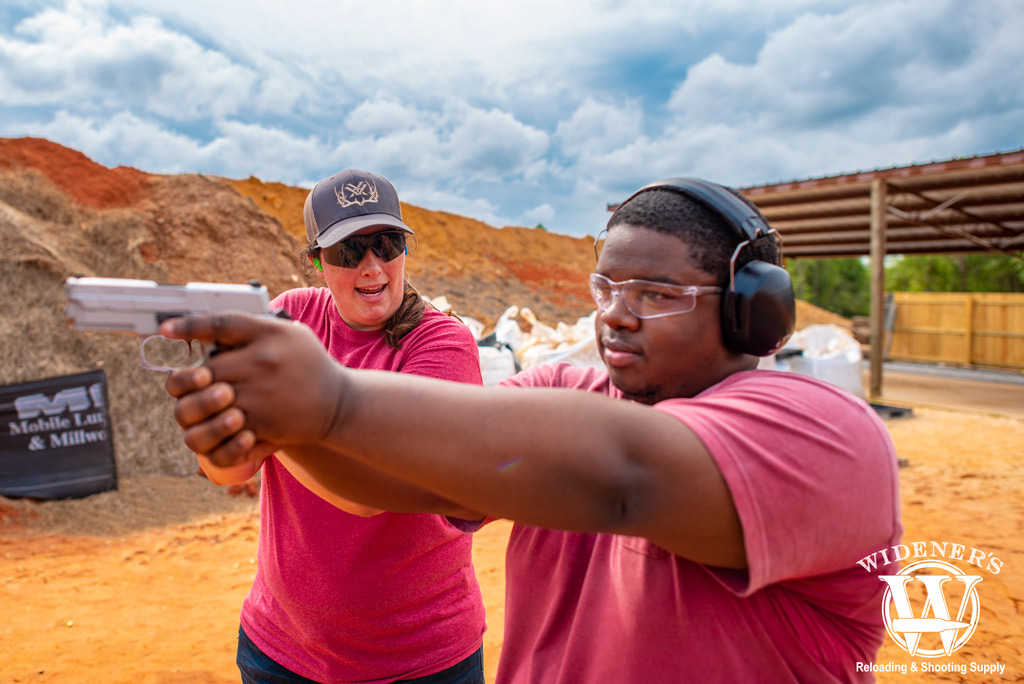
The live fire test is the most exciting part of a conceal and carry class, be sure to practice at the range before taking the test in class.
- Live Fire Test
Depending on your state statutes’ requirements, you may or may not have to perform a live fire test, but I highly advise getting some sort of live fire training before carrying a firearm. I require my students to load, fire, and unload a semi-automatic pistol and a revolver. I use a single-action revolver to show my students how important it is to lower the hammer slowly with the trigger depressed without firing a round.
The NRA classes all require a live fire test. These classes typically have .22LR pistols to qualify with, but also allow you to shoot the firearm you choose to bring. Some states do mandate you qualify with the caliber of or firearm you will be concealed carrying. In my class, I do require all of my students to shoot at least .380 ACP or 9mm pistols. Some other options would be .38 Special or if the student is a more advanced shooter, .45 Auto or ACP.
Number of Rounds Needed at What Distances to Pass?
In some states, the requirement for the live fire test is a set percentage or number of total rounds shot within a target. The distances may also be state-dependent, but statistically, attacks happen within 7 yards, so that’s a reasonable distance to shoot at. The number of rounds needed could depend on two things. It could be how many tries it takes to reach the goal percentage or the number of rounds on a certain target. Your instructor should tell you how many rounds of ammunition to bring to class, but if they don’t, don’t be afraid to ask!
NRA Classes have different qualification levels for distances. For example, the Level 1 qualification is four five-shot groups within the four-inch circle at 10 feet. The Level 2 is four five-shot groups within the four-inch circle at 15 feet and the Level 3 is four five-shot groups within the four-inch circle at 20 feet.
Gun Range Etiquette 101
The instructor is your range officer, as well as the employees that work at the range if you’re at a privately owned range. You’ll be taught many range commands in a concealed carry class. Be sure to listen to all of their commands! They are actively looking for students who listen and follow the rules of firearm safety.
Don’t load, pick up a firearm, or start shooting until an instructor tells you to do so. If you have any problems on the range with your firearm, you can call for a “cease fire” and raise your hand so the instructor can come to you. Do not walk away from a firearm for any reason or point it in any direction other than downrange. Your instructor should brief you on the range commands before shooting. You can also ask the range you’re at for their range commands as they may be different.
What Happens After a Conceal and Carry Course?
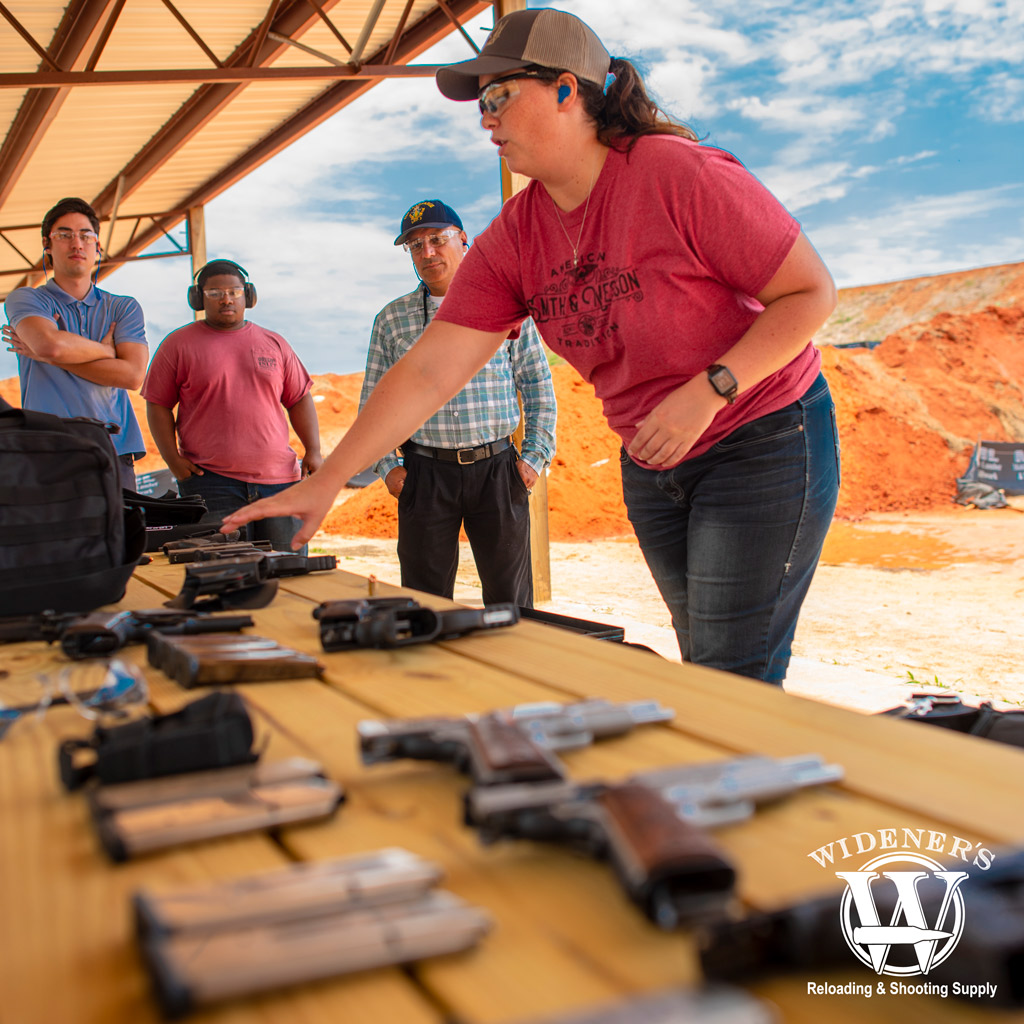
Continue your training after being taught in your concealed carry class to expand your knowledge of marksmanship and safety.
Apply For Your CCW Permit
A certified instructor should give you a certificate or document that you passed the concealed carry course to take with you to apply for your permit. If you do not feel as if you are ready for a concealed carry permit or do not pass the class the first time, that is okay. You may need more education, more classes, a different instructor, or may have other reasons for why. You can go back and take more classes or the same one over again. I take classes regularly, even if it’s mostly information I may already know, I always seem to pick up something new.
Choosing a Concealed Carry Gun
Try before you buy? If you have not selected a handgun for concealed carry yet, find a range that rents pistols. Choose a weapon in a caliber that is comfortable for you to shoot with consistently. You’ll be putting a lot of practice rounds downrange, so make sure it’s reliable and feels good in your hands. Ask your instructor for recommendations, seek out articles about handguns from reputable sources, and more before making a choice.
Shopping For Self-Defense Ammunition
For self-defense, I recommend only carrying hollow-point ammunition in your concealed carry pistol. These bullets expand on impact and do not go through a target to injure anything that is behind it. The biggest fear for new shooters is carrying a gun with a round loaded in the chamber. This fear stems from being uncomfortable with pistols.
You can defeat the fear by learning about manual safeties, trigger safeties, and the rules for how to treat a firearm. Basic firearm rules covered in class include keeping your finger off the trigger until ready to shoot. Trigger discipline is, in my opinion, the most important gun safety rule. Always treat firearms as if they’re loaded, you’ll only pull the trigger when you need it most.
Continuing Your Education
There is no limit to the amount of training you should do with your concealed carry gear. Practice drawing your pistol from concealment with an unloaded firearm. Work on fundamentals when you’re at the shooting range. If you range allows it, start training to draw your loaded pistol from concealment and firing shots at a target. In a self-defense situation, you have seconds to react and fire a shot, in a worst-case scenario. Always train to react calmly in high-stress situations and carry with a round in the chamber ready to go.
Don’t stop your learning by what is taught at the concealed carry class. Seek out education from different sources, take more advanced classes when you’re ready, take scenario-based classes with force-on-force instruction. Don’t ever stop learning and progressing with your firearm knowledge and capabilities.


